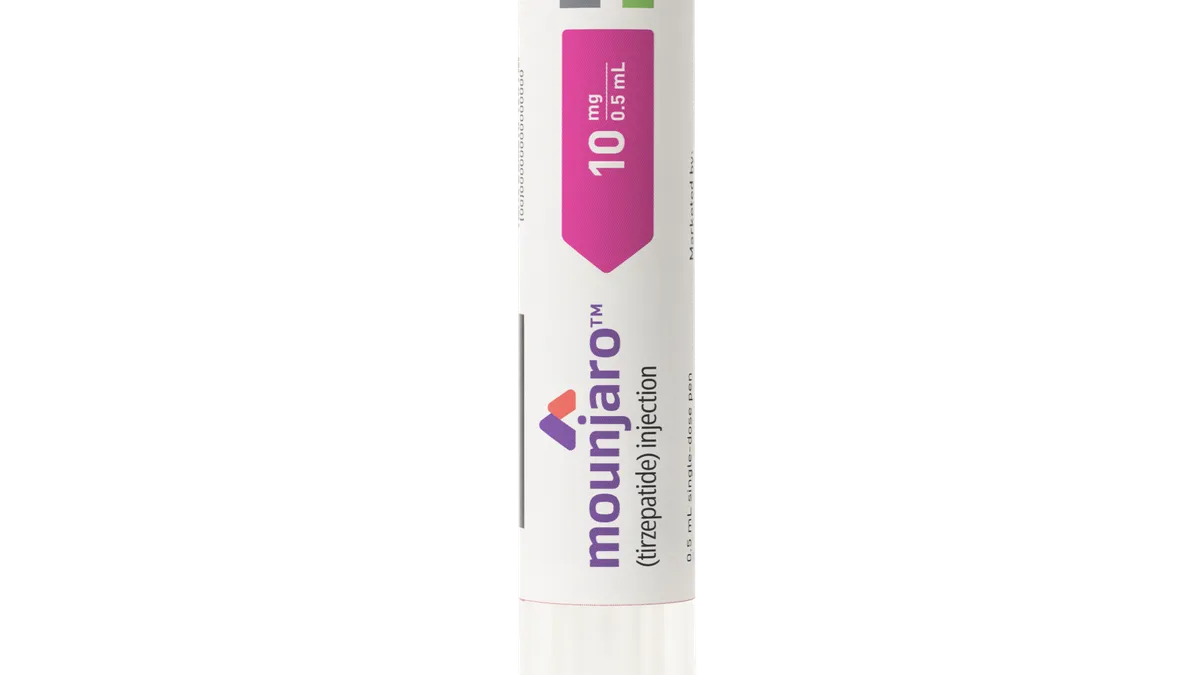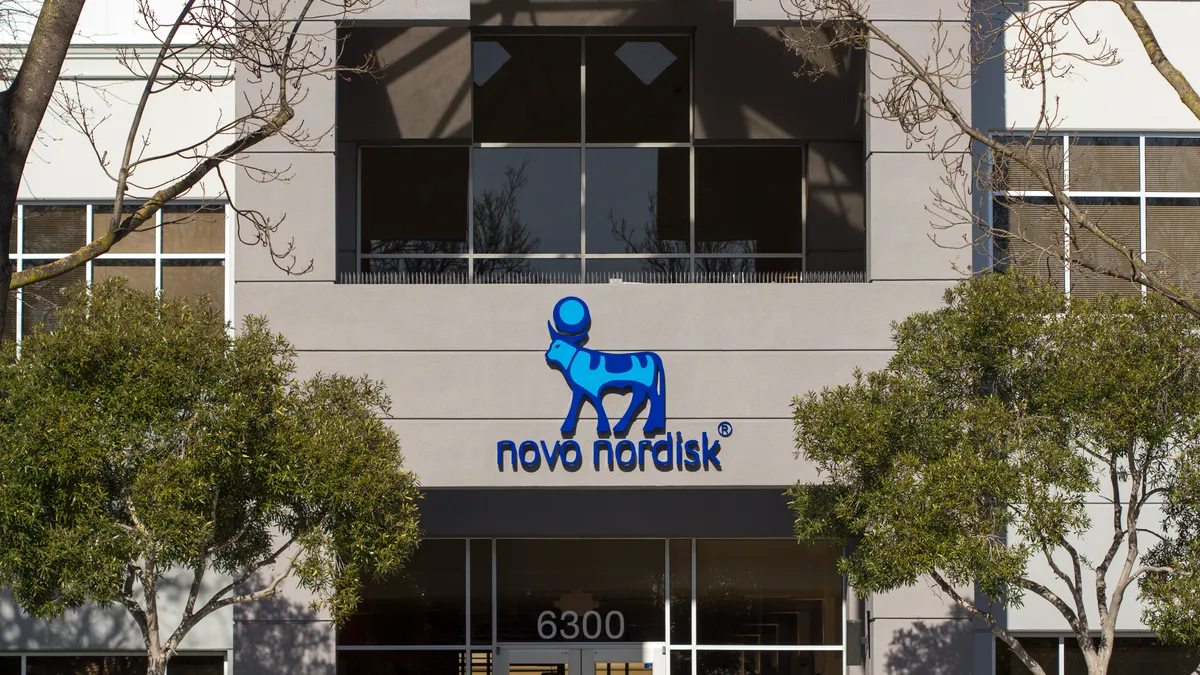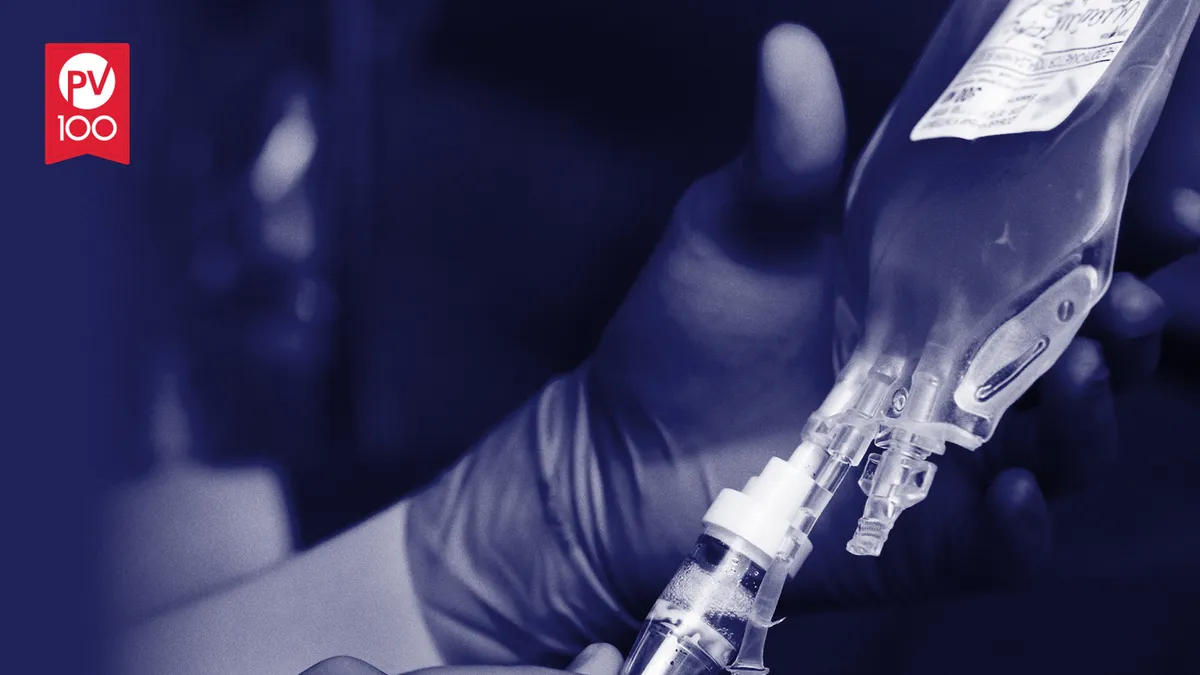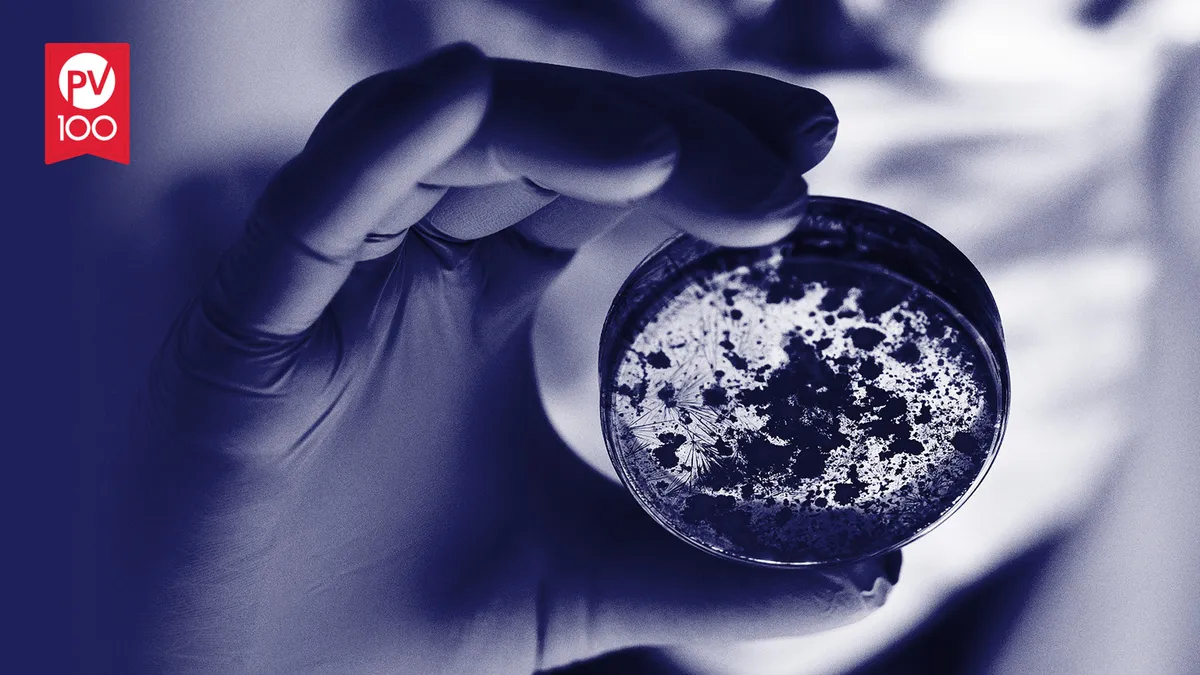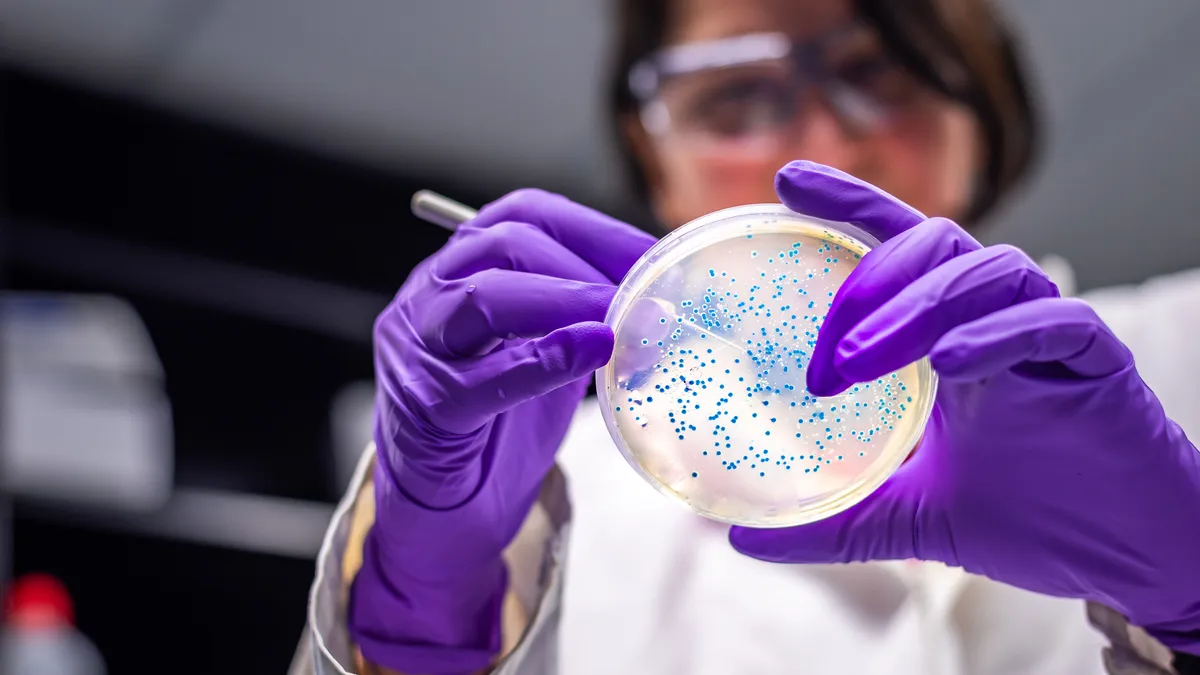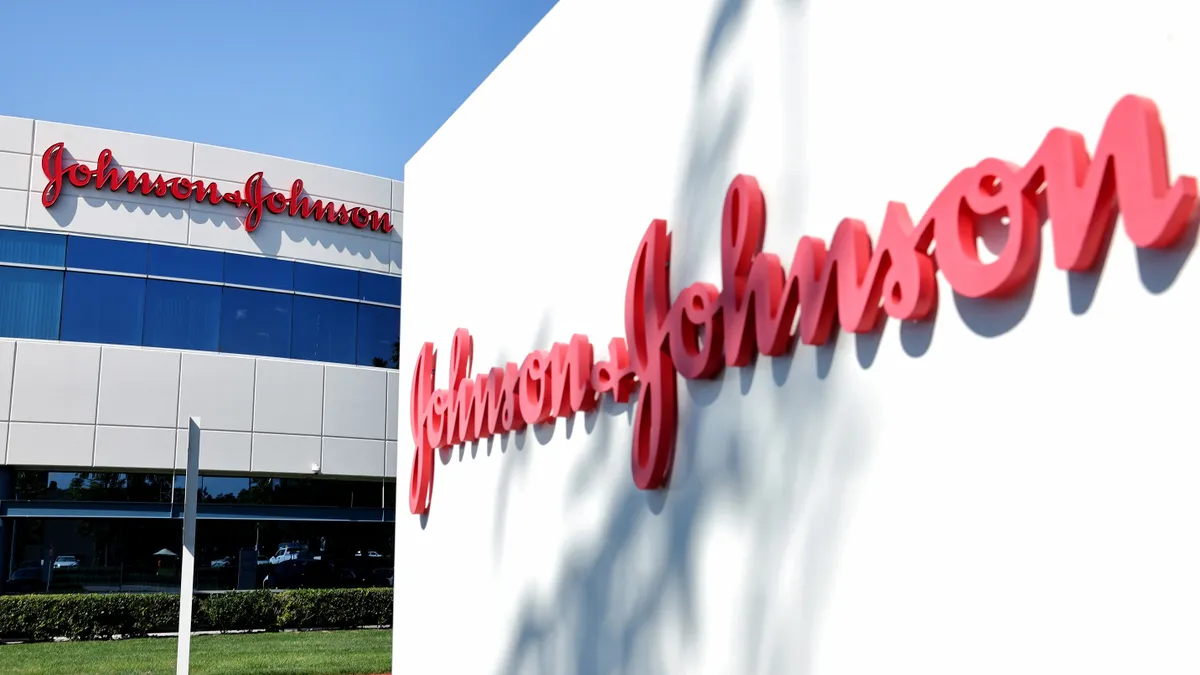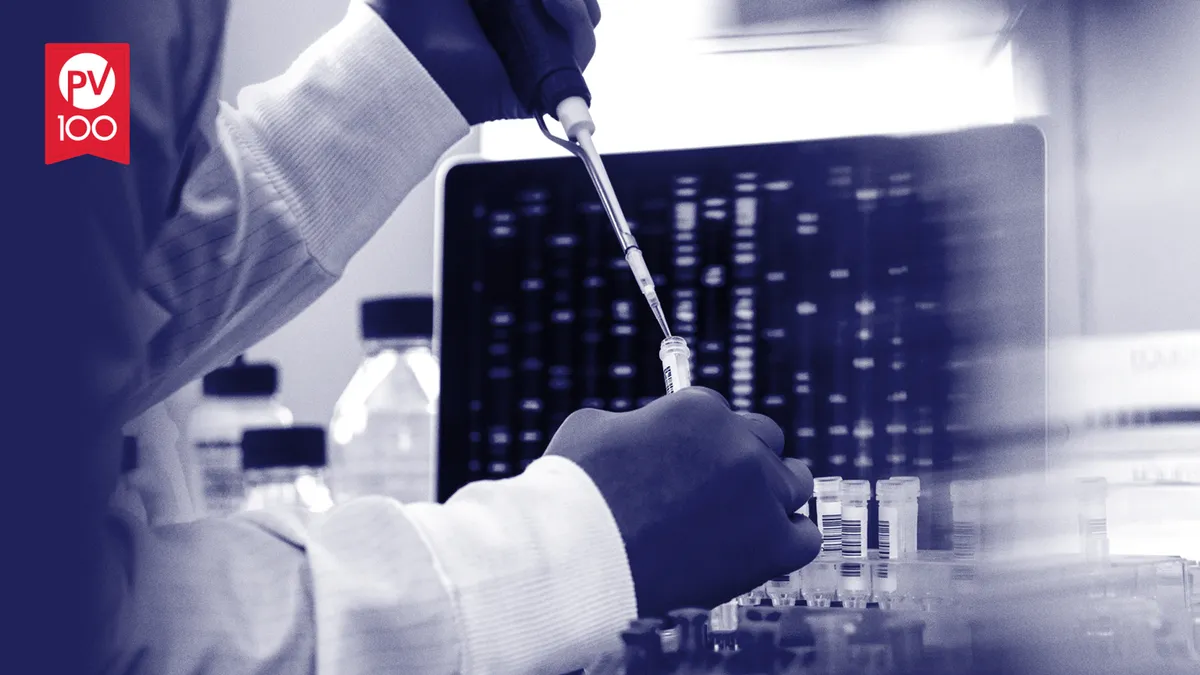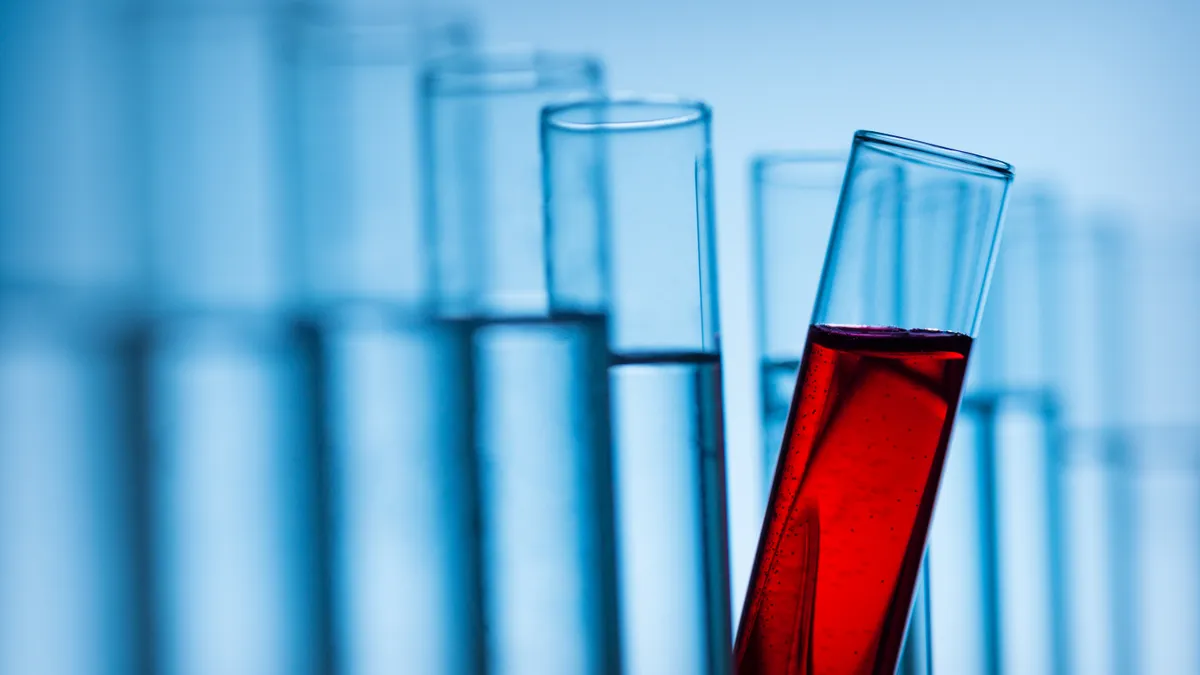Every blockbuster drug needs to start somewhere. Behind the bestselling treatments atop a major pharma’s earnings statement are products that might not be raking in the big sales numbers yet but have grown significantly in the beginning of their life cycles.
Below Merck & Co.’s cancer juggernaut Keytruda, there’s the pneumococcal vaccine Vaxneuvance. J&J’s longtime immunology blockbuster Stelara is pulling in billions, but the drug’s percent growth pales in comparison to oncology newcomer Tecvayli. These products aren’t necessarily household names yet, but their improvements over the last year are greater than anything else from the pharma giants.
These newer treatments with high sales potential could be critical as drugs that once held megablockbuster status approach patent cliffs in the next few years.
Of course, some of the most improved rookies have already made an outsized impact in the pharma world, namely diabetes and weight loss drugs from Novo Nordisk and Eli Lilly. Launched less than two years ago, these treatments have taken the pharma world by storm, promising tentpole status down the road. They’re limited now only by nascent manufacturing capacity as the companies scramble to meet soaring demand.
These are the most improved products at each of the 10 largest pharma companies in the world by market capitalization over the course of a year as reported in first-quarter earnings.

Eli Lilly - Mounjaro
Q1 2024 revenue: $1.8 billion
Q1 2023 revenue: $569 million
Percent growth: 218%*
*Calculated by PharmaVoice. Lilly did not report Mounjaro percent growth for this period.
Launched in June 2022, the GLP-1 diabetes and weight loss drug Mounjaro has been so in-demand that it is impeded by its own success — with revenue more than doubling year over year, the drug still did not meet analyst expectations due to supply issues related to manufacturing capacity. But, along with Lilly’s other GLP-1 Zepbound, the treatments signal a new wave of many more years of growth as Lilly ramps up its supply chain, as promised by CEO David Ricks on the company’s earnings call.
Novo Nordisk - Wegovy
Q1 2024 sales: 9.4 billion DKK ($1.4 billion)
Q1 2023 sales: 4.6 billion DKK ($665 million)
Percent growth: 106%
Along with Eli Lilly, Novo Nordisk is changing the diabetes and weight loss landscape with its two GLP-1 medications, Ozempic and Wegovy. Although Ozempic boasted the better overall sales performance in the first quarter, Wegovy showed more growth, more than doubling in sales over the course of the year. And there’s no sign of slowing down — the company reported that at least 25,000 U.S. patients start on Wegovy every week, four times more than in December last year.
Johnson & Johnson - Tecvayli
Q1 2024 sales: $133 million
Q1 2023 sales: $63 million
Percent growth: 111%*
*Calculated by PharmaVoice. J&J did not report percent growth for this period citing a figure “greater than 100% or not meaningful.”
Tecvayli was the first bispecific T cell engager approved in the U.S. for patients with multiple myeloma. Sales more than doubled from 2023 to 2024 in the drug’s first full year on the market, leading J&J’s head of innovative medicines Jennifer Taubert to call the franchise a “stronghold” for the company. The results also showed the need for new treatments in the difficult-to-treat multiple myeloma space.
Not far behind Tecvayli in year-over-year growth was Spravato, the esketamine drug used to treat depression. The “party drug” that underwent a rigorous regulatory process to approval in 2019 grew 72.2% to $225 million in sales over the course of the year.
Merck & Co. - Vaxneuvance
Q1 2024 sales: $219 million
Q1 2023 sales: $106 million
Percent growth: 106%
Merck, known for its blockbuster cancer drug Keytruda and the HPV shot Gardasil, has another vaccine moving up the charts. Vaxneuvance, approved in 2021 to prevent diseases caused by Streptococcus pneumoniae in children, competes against Pfizer’s Prevnar franchise but has doubled in sales year to year due to the key pediatric indication that gave Merck a leg up as it enters the space.
AbbVie - Qulipta
Q1 2024 net revenue: $131 million
Q1 2023 net revenue: $66 million
Percent growth: 97.7%
AbbVie’s rheumatoid arthritis treatment Humira has long been a cash cow for the pharma giant, but investors are looking for new drugs to fill those shoes as biosimilars begin to chip away at sales. Although it’s still early days for the migraine treatment Qulipta, the almost doubling of revenue in the last year demonstrates the migraine market could finally be seeing some penetration. A new FDA indication last year gave the oral anti-CGRP medication a larger market for patients with either episodic or chronic migraines, contributing to the revenue bump.
And as AbbVie looks to retain its pole position in the rheumatoid arthritis market, the next-generation Humira-like drug Rinvoq is showing signs of improvement with year-over-year growth reaching nearly 60%.
AstraZeneca - Saphnelo
Q1 2024 revenue: $91 million
Q1 2023 revenue: $47 million
Percent growth: 94%
The lupus drug Saphnelo, approved in 2021, marked a change in how the medical community approaches the long-misunderstood autoimmune condition. By addressing the immune system directly as opposed to the standard off-label treatments, AstraZeneca muscled its way into a market with a good deal of unmet need. And it’s paid off by almost doubling revenue for the drug over the last year.
AstraZeneca also posted a 79% jump in revenue to $461 million for the breast cancer drug Enhertu. The drug, developed alongside Japan’s Daiichi Sankyo, is racking up new indications for what the partners hope will be a long runway of market potential.
Novartis - Leqvio
Q1 2024 net sales: $151 million
Q1 2023 net sales: $64 million
Percent growth: 136%
The cholesterol drug Leqvio has provided some long-term results that show it’s capable of reducing the risk of heart disease and stroke with just two treatments a year. With the high unmet need for cholesterol drugs around the world, that has quickly given Novartis a promising future for the drug with 136% growth year over year after just a couple years on the market.
Last year’s most improved drug for Novartis was the multiple sclerosis treatment Kesimpta, which notched 66% growth to $637 million in this year’s first quarter.
Roche/Genentech - Vabysmo
Q1 2024 sales: 847 million CHF ($933 million)
Q1 2023 sales: 432 million CHF ($476 million)
Percent growth: 108%
The eye disease medication Vabysmo more than doubled its sales despite competition from the long-dominant Eylea from Regeneron and Bayer. Exceeding expectations from analysts, the drug’s sales still fall short of Eylea’s, but the big jump last year indicates Roche’s Genentech is closing the gap in the ophthalmological space.
Amgen - Evenity
Q1 2024 sales: $342 million
Q1 2023 sales: $254 million
Percent growth: 35%
The bone drug Evenity from Amgen, approved in 2019, is a follow-up to the company’s bestselling Prolia, which is seeing slower growth as biosimilars enter the market. Like AbbVie’s Rinvoq, Evenity aims to improve upon its predecessor’s results and keep Amgen at the top of the postmenopausal bone density market. While Evenity hasn’t quite reached Prolia’s sales heights, growth of 35% shows it’s still filling an unmet need and giving Amgen some runway in the therapeutic area.
Pfizer - Vyndaqel family
Q1 2024 revenue: $1.1 billion
Q1 2023 revenue: $686 million
Percent growth: 66%
Vyndaqel, Vyndamax and Vynmac from Pfizer are among the pharma giant’s saving graces in the years following the pandemic. As overall revenue tanked from the COVID vaccine heights, the nerve damage drugs rose above $1 billion for the quarter, marking 66% growth from the year before. As a rare disease drug, the Vyndaqel franchise’s market isn’t deep, but competitors like Alnylam have had a tough time tossing Pfizer’s brands from their mantle.



